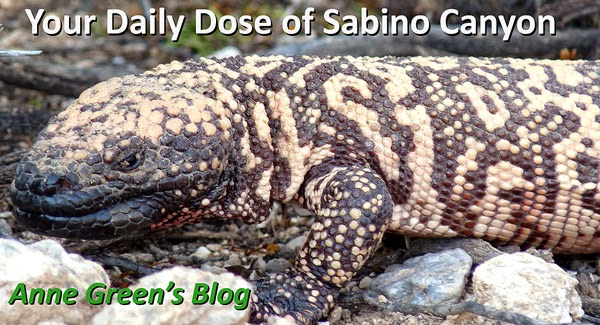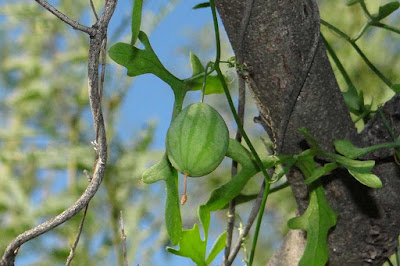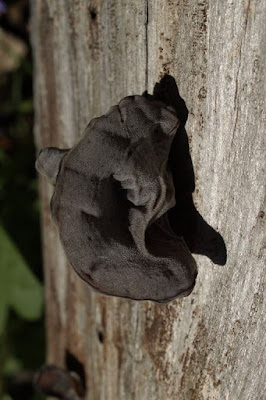 |
| Photo by Fred Heath 9/30/2015 |
Fred writes:
This is the Berlander Wolfberry (Lycium berlandieri). We have three species of wolfberry in Sabino and this one waits until the summer rains. If you think the fruit looks like little tomatoes, that is because they are related, with both being in the Solanaceae or Nightshade Family.
Anne says: The Nightshade Family is part of the folklore, religious and other cultural practices, as well as the myths and legends of peoples across the globe. It's an appropriate plant family to feature on Halloween : -)
Belladonna (
Atropa belladonna) (aka Deadly Nightshade), for example, has long been used to poison enemies, as a way for witches to 'fly,' and in order to dilate the pupil of women's eyes (thought to be more beautiful in some cultures). When tomatoes (a new world plant) were introduced in Europe, no one wanted to try them. (Same family as Belladonna?! Are you crazy?!)
Many nightshades are edible (tomatoes, eggplant, potatoes, the wolfberries above); others are more or less deadly. One of the more toxic nightshades in Sabino Canyon is
Sacred Datura (
Datura wrightii). Doctors and nurses who work in emergency departments have seen poisonings from Sacred Datura here in Tucson. 'Kids' try ingesting it (usually by smoking; tobacco is in the same family) in order to have hallucinations. Never, ever a good idea. Yes, some plants in this family have psychoactive properties. And this leads me to this story that Carol graciously shared about (what may have been) her mother's reaction to my favorite nightshade.
As is relatively common for people with memory issues at that age, Carol's 90+-year-old mother is taking prescription memory medication (Aricept). A while ago, her mother reported that many people had joined her in bed, keeping her warm; people were entertaining her in her room, and other such stories, pleasantly relayed. One of the caregivers noted: "
She's seeing the shades."
Carol did some digging and found a bag of potatoes (one of her mother's favorite foods) that hadn't been stored properly - growing eyes,
going green. Although a healthy adult would have to eat a lot of potatoes-gone-green in order to be affected by the toxin solanine (yes, it's 'natural'), a memory-impaired adult might be more susceptible to eating a green-ish potato, (eating any potato, for that matter,) or even having the green-ish potatoes in the house. After removing the bag, the people disappeared. Kind of sad, actually, since she was enjoying their 'presence'. [All mistakes in the retelling are my own.]
The moral of this story? Never underestimate the power of plants! And watch out for nightshades.















































